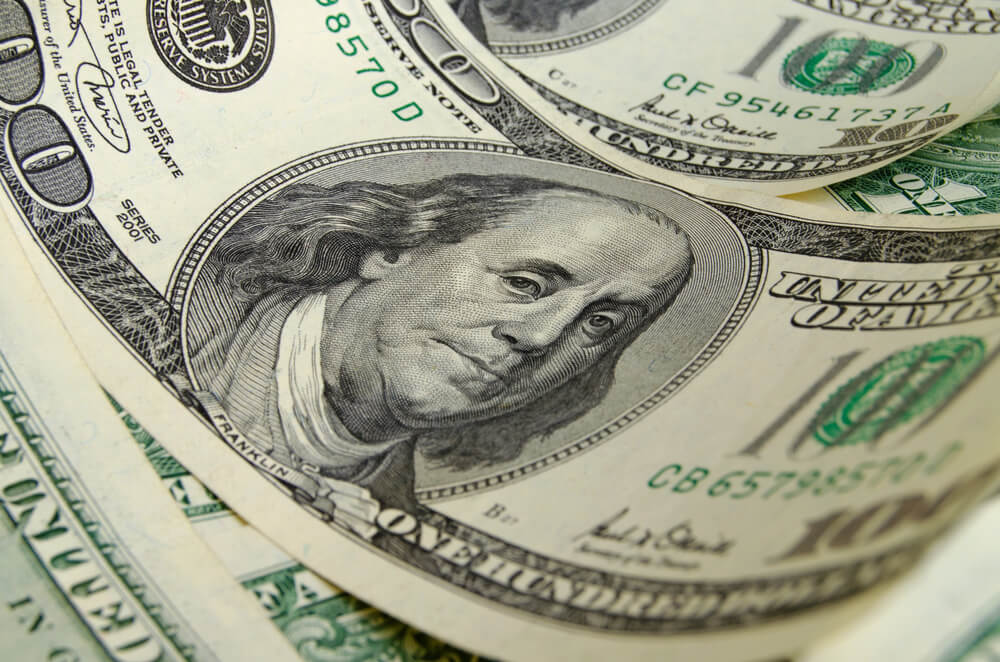Safe-Haven Dollar Holds Steady Near Recent Lows as Housing Data Looms

The U.S. dollar held its ground on Wednesday after falling for three straight sessions, although it remains close to its lowest level in two weeks. The stabilization comes as investor risk appetite improved following a new trade agreement between the U.S. and Japan.
As of 04:10 ET (08:10 GMT), the Dollar Index—which measures the greenback against six major peers—was largely unchanged at 97.110, slightly above its lowest point since July 10.
The index has shed more than 6% since April 2, when former President Donald Trump launched what he dubbed “Liberation Day” tariffs, sparking global trade tensions. While many of those tariffs were later postponed or suspended in favor of bilateral deals, the dollar has remained under pressure since.
Trade Deal with Japan Eases Global Trade War Fears
Markets reacted positively to Trump’s announcement of a trade agreement with Japan, which helped allay fears of a broader trade war. In a post on Truth Social, Trump stated that the U.S. will impose a 15% tariff on Japanese imports, down from the 25% originally planned for August 1. He also revealed that Japan intends to invest $550 billion in the U.S. economy.
The news lifted risk sentiment and reduced demand for the dollar as a safe-haven asset, which has been one of the biggest underperformers since the tariff saga began.
Focus Shifts to U.S. Housing Market
Attention is now turning to the release of U.S. existing home sales data for June, with analysts warning that the housing sector could become the next weak spot in the U.S. economy.
“The U.S. focus will be on the June existing home sales release,” said analysts at ING. “Some are thinking that the housing sector will be the next shoe to drop in the U.S. slowdown.”
The data is being closely watched ahead of the Federal Reserve’s policy meeting next week, where further insight into interest rate strategy is expected.
Euro Softens Slightly; ECB Expected to Pause Rate Cuts
In Europe, EUR/USD dipped 0.1% to 1.1745, remaining close to a four-year high reached earlier this month. The euro has gained more than 13% year-to-date as investors move away from U.S. assets in search of stability.
The European Central Bank is widely expected to keep interest rates unchanged on Thursday, following eight consecutive rate cuts, as policymakers await clarity on U.S. tariff threats.
Meanwhile, GBP/USD rose 0.2% to 1.3546, bolstered by the U.K.'s recently signed trade agreement with the U.S.
Yen Slips Amid Japanese Political Uncertainty
Elsewhere, the USD/JPY pair rose 0.1% to 146.72, reversing earlier yen strength that was driven by the trade pact. Optimism quickly faded amid signs of political instability in Japan.
Local media outlet Mainichi reported that Prime Minister Shigeru Ishiba plans to resign by the end of August, following a poor showing for his Liberal Democratic Party in recent upper house elections. The news has introduced fresh uncertainty into Japan’s economic outlook.
Regional Currencies Firm on Trade Deal Optimism
Broader Asian sentiment received a boost from the U.S.-Japan agreement:
AUD/USD climbed 0.5% to 0.6577,
USD/CNY dipped 0.2% to 7.1629,
as investors across the region welcomed signs of easing trade tensions and renewed investment flows.
* The content presented above, whether from a third party or not, is considered as general advice only. This article should not be construed as containing investment advice, investment recommendations, an offer of or solicitation for any transactions in financial instruments.


